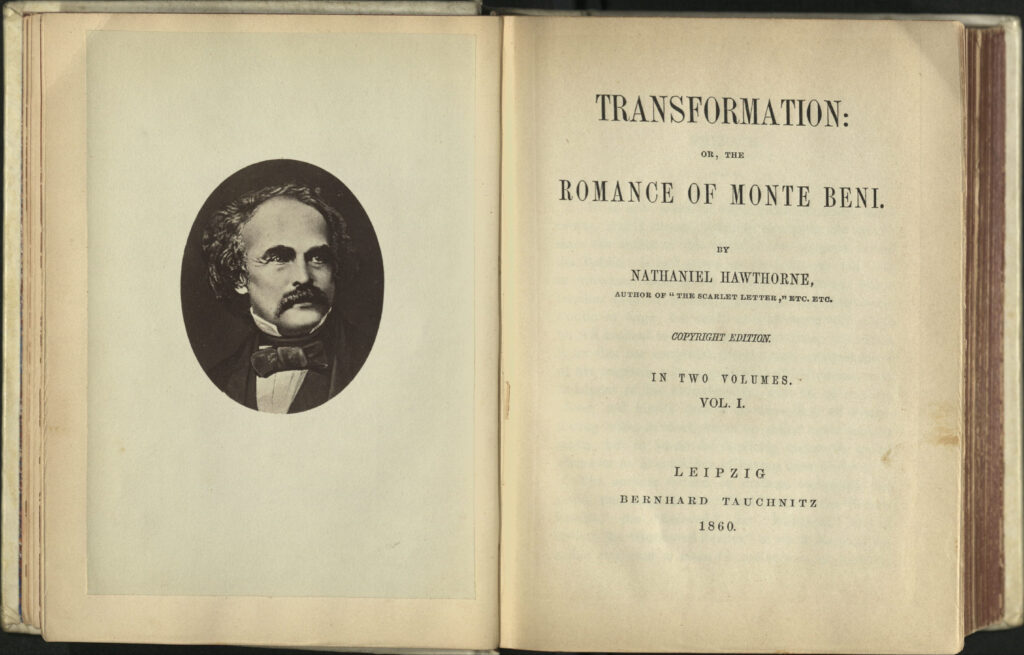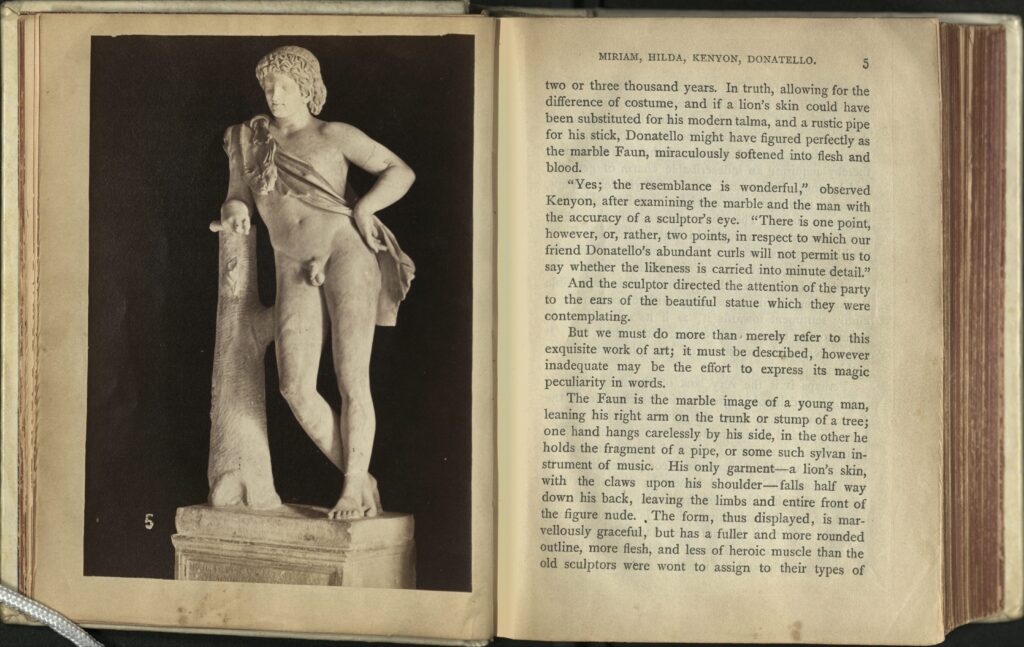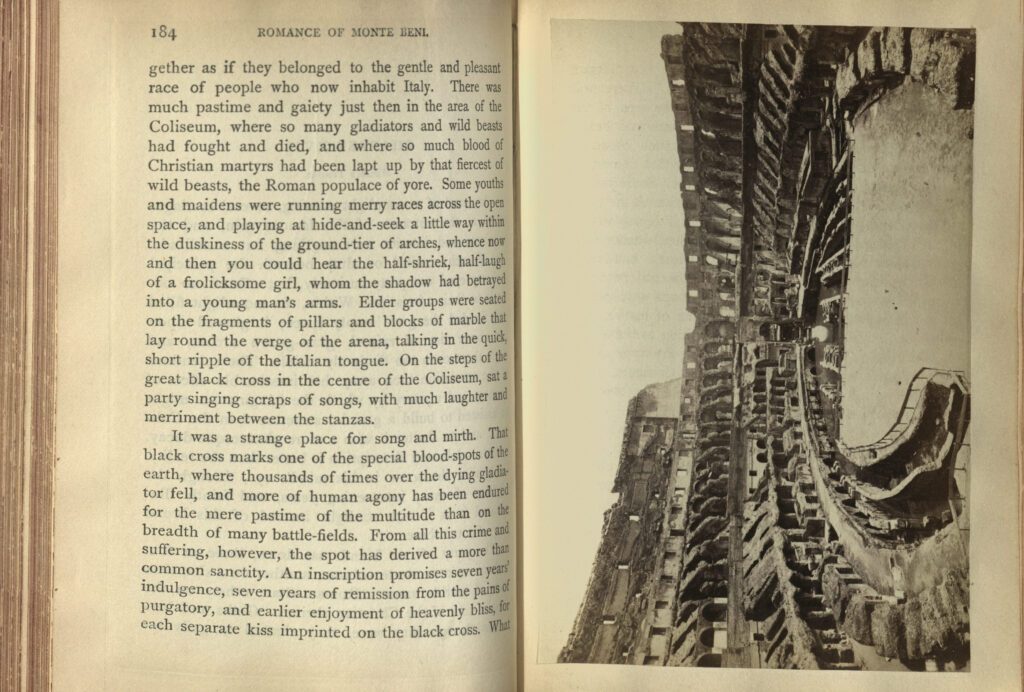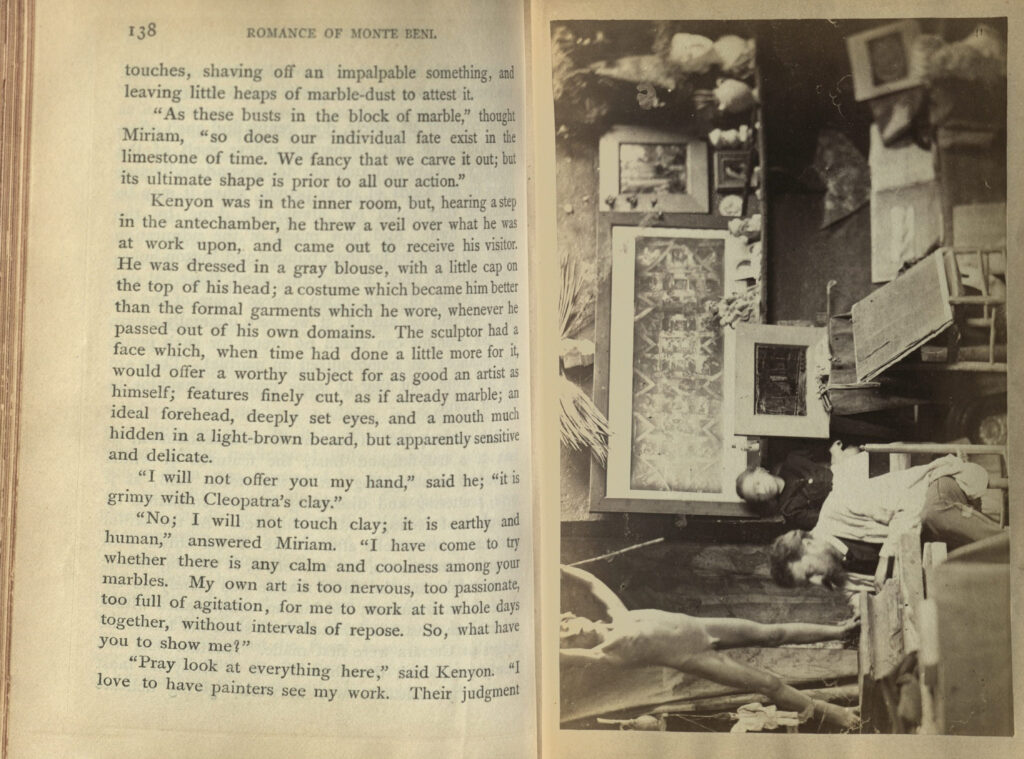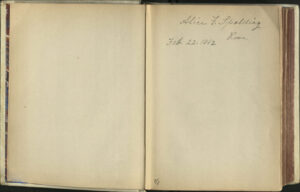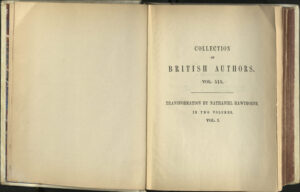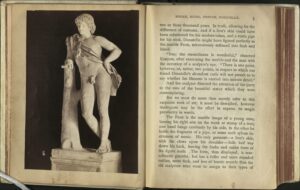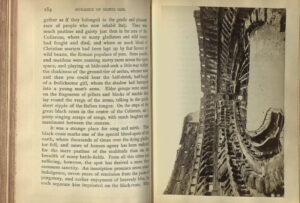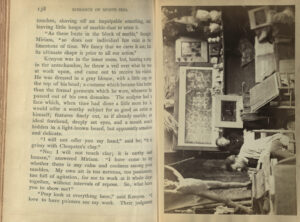The Marble Faun: or, the Romance of Monte Beni
McGuigan Collection
The Marble Faun, a gothic romance by Nathaniel Hawthorne, Bowdoin Class of 1825, remains both a major literary accomplishment and a testament to the allure of Rome for American travelers in the middle of the nineteenth century. Although a fictional tale, it recounts with great realism and detail—founded on Hawthorne’s own experiences—the visits of three young Americans and their Italian friend to the sculpture galleries of Rome and ancient sites like the Roman forum and catacombs, as well as the friendships formed among expatriate artists.
The Marble Faun quickly became essential reading for Americans, even a trusted travel guide despite its fictional nature. The rich descriptions of Rome’s sights and especially the lofty, florid accounts of ancient ruins and sculpture—one of which the novel is named after—stimulated the imagination of American tourists and armchair travelers alike. In Europe, travelers could even purchase bespoke editions like this one, which allowed them to choose photographs of the ancient ruins and sculptures described by Hawthorne and illustrate the novel in a way that documented their own travels and memories.
Hawthorne graduated Bowdoin in 1825, the same year as fellow author Henry Wadsworth Longfellow (1807–1882). Already a celebrated author, Hawthorne and his family travelled through Italy and France from 1857 to 1860. Hawthorne was likely familiar with his former Maine-born landlord George Stillman Hillard’s travelogue, Six Months in Italy (1853). Both Hawthorne and Hillard adopted a similar metaphor to capture the ancient history steeped in the stones of Rome. Describing the view from the Capitoline in the Marble Faun, Hawthorne wrote that the tower “looks abroad upon a larger page of deeper historic interest than any other scene can show,” going on to reflect that in Rome, ancient history seemed much nearer and more immediate than any intervening epoch. Hawthorne’s experience of Italy, and especially of Rome, was a formative experience that closed the “chasm” between the author and antiquity; The Marble Faun was, in many ways, an attempt to recapture and share that experience.
Hawthorne’s novel was named after a famed ancient sculpture in the Capitoline Museum in Rome, a marble sculpture of a youthful satyr known as the “Marble Faun” or “Resting Satyr.” The Capitoline sculpture is the best known among over one-hundred surviving ancient statues of the type, originally a Greek ideal sculpture by the famed fourth-century BCE sculptor Praxiteles. In the novel, Hawthorne’s protagonists encounter the sculpture in the first chapter during a visit to the Capitoline Museums. Both the novel and the sculpture were esteemed on Bowdoin’s campus. A plaster cast of the sculpture, likely added to the growing cast collection in recognition of Hawthorne’s literary achievement, was prominently installed on its own in the center of the Bowdoin Gallery, where it was surrounded by paintings from the Bowdoin and Boyd gifts, including the Continence of Scipio and Venus and Cupid. The entry for the cast in the guide to the collection was accompanied by a quote from the first chapter of Hawthorne’s novel, in which the statue is first encountered and described:
Only a sculptor of the finest imagination, the most delicate taste, the sweetest feeling, and the rarest artistic skill—in a word, a sculptor and a poet too—could have first dreamed of a Faun in this guise, and then have succeeded in imprisoning the sportive and frisky thing in marble. Neither man nor animal, and yet no monster, but a being in whom both races meet on friendly ground. The idea grows coarse as we handle it, and hardens in our grasp. But, if the spectator broods long over the statue, he will be conscious of its spell; all the pleasantness of sylvan life, all the genial and happy characteristics of creatures that dwell in woods and fields, will seem to be mingled and kneaded into one substance, along with the kindred qualities in the human soul. Trees, grass, flowers, woodland streamlets, cattle, deer, and unsophisticated man. The essence of all these was compressed long ago, and still exists, within that discolored marble surface of the Faun of Praxiteles.
– Nathanial Hawthorne, The Marble Faun, 1860




